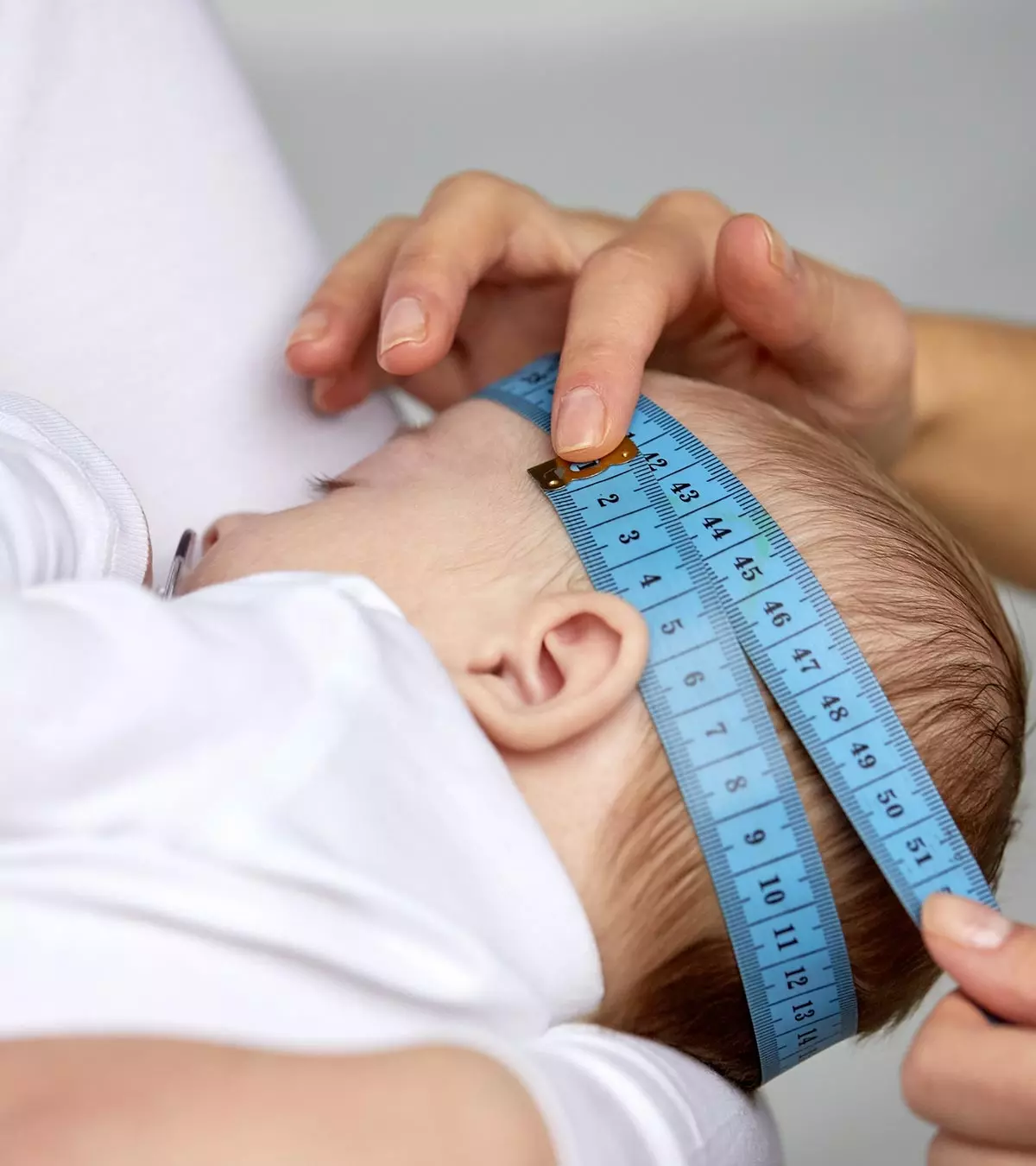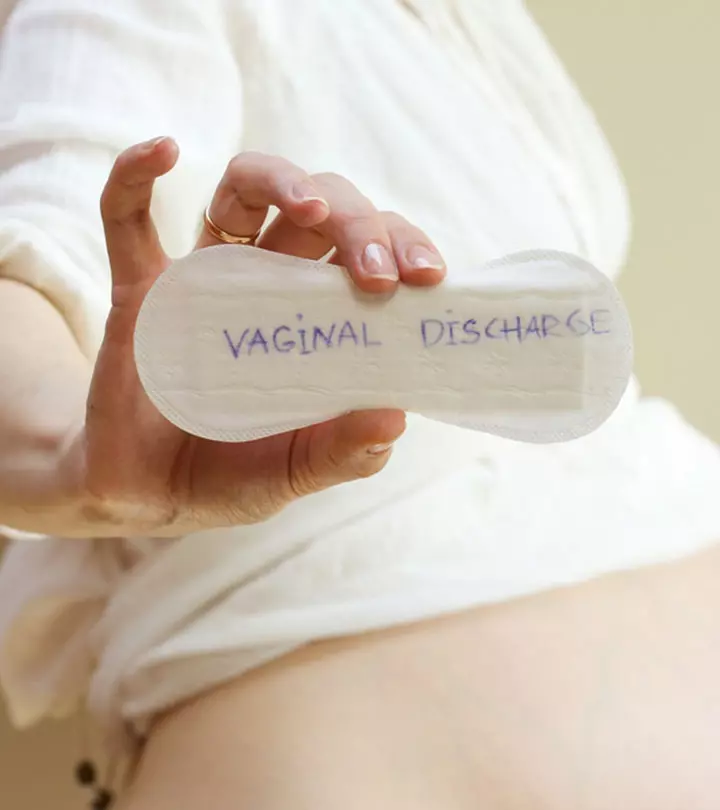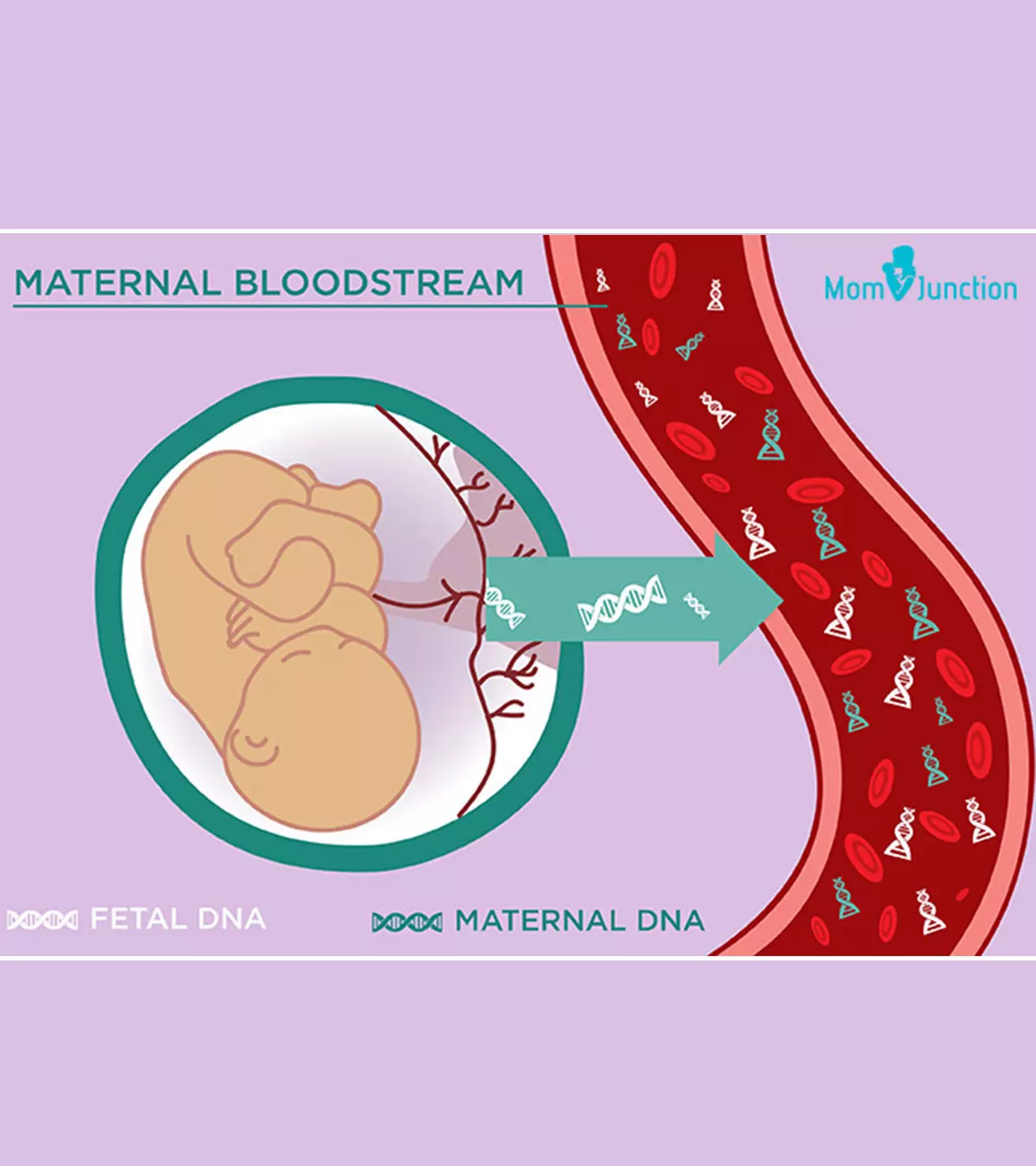
Image: ShutterStock
Lip tie in babies is not a serious physical anomaly. Excessive drooling and clicking sounds and issues while nursing can be symptoms of lip tie in babies. Lip ties may interfere with breastfeeding and the development of teeth. Although it is painless, if left unmanaged, there can be complications in the future.

Read this post to know the causes, diagnosis, and treatment of lip ties in babies.
Key Pointers
- A lip tie occurs when a piece of tissue attaches the upper lip to the gums and prevents movement.
- A poor latch, clicking sound, or improper suction during breastfeeding indicate a lip tie.
- Mild cases may be treated using basic exercises to manually release the tightness, whereas in severe cases, the doctor may suggest frenectomy.
What Is A Lip Tie?
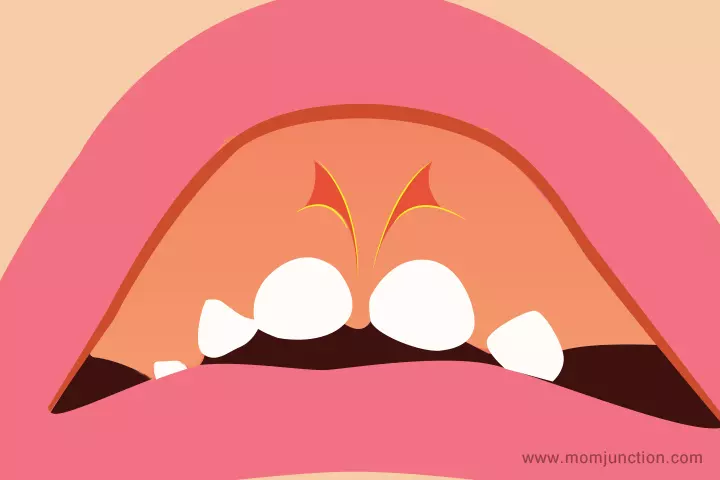
A lip tie occurs when the soft membrane of the tissue behind the upper lip tightly attaches to the upper jaw, restricting the movement of the lip(1)
.
Normally, the thin sheet of tissue (medically called labial frenulum) extends from behind the upper lip to the front of the gums of the upper jaw. You can see the tissue on raising the upper lip.
But in a lip tie, the frenulum is thick and extends to the ridge of the upper gums, where the teeth appear. Some extreme cases cause the tissue to extend beyond the ridge and towards the upper palate. In such cases, it can create a gap between the teeth.
In a lip tie, it is difficult to lift the upper lip. Lip tie is also known as ‘tight labial frenulum’ due to the rigidity of the upper lip.
What Causes A Lip Tie In Babies?
The lip tie is caused by an abnormally connected tissue due to an underlying reason. A fault in the MTHFR gene, which is also responsible for the development of cleft lip, is assumed to be responsible for lip tie in babies (2). Since the condition is genetic, there is no known way of preventing it.
 Point to consider
Point to considerWhat Are The Symptoms Of Lip Tie In Babies?
You may have experienced some breastfeeding challenges and noticed certain signs that could indicate your baby has a lip tie.
Symptoms and signs in the babies include (3):
- Poor latch while breastfeeding is often the leading sign of lip tie because the baby’s lips are unable to flange around the nipple correctly.

- The baby is unable to maintain suction on the nipple and may come off the breast sooner than they should.
- The baby makes clicking noises because of the poor latch, which causes air to pass through the lips.
- More intake of air leads to gassiness in the baby.
- The baby becomes colicky and fussy. It is caused by the constant hunger, gassiness, and frustration of not being able to sustain a latch. Colic from improper latching could also be the reason why the baby cries when breastfeeding.

- The baby’s upper lip curls inward when the frenulum is too tight. The tightness tugs the upper lip into the mouth.
- Inadequate consumption of breast milk can lead to poor weight and height gain, which in turn hinders the physical growth of the baby, ultimately impacting infant wellness.
 Quick fact
Quick factOther general symptoms that could be seen in babies with lip tie are difficulty in breathing and falling asleep often while nursing.
Symptoms experienced by the mother:
- Nipple pain: The improper latch can cause discomfort and pain in the nipple. Also, in an attempt to hold on to the nipple, the baby bites while nursing, causing further pain.
Nanci Kennedy, a mom and blogger, experienced pain while nursing her baby, who had a lip and tongue tie. Sharing her experience, she says, “Yeah, it can be a little painful initially while you’re getting used to it. But it was more than a little painful… And it wasn’t just while I was getting used to it. It lasted well past the three-month mark. I even remember crying sometimes when it was time to nurse her because I was so sore, and trying to get her to latch correctly was exhausting, painful, and frustrating for both of us… After a few months, the painful nursing subsided (or so I thought), and we had what I thought was a normal nursing relationship for the remainder of her first year. “

- Flattened nipples: The constant incorrect latch distorts the shape of the nipple.
- Engorgement of breasts and mastitis: The milk remains in the breast since the baby is unable to feed properly. It leads to breast engorgement, which in turn can lead to issues like mastitis, the infection of milk ducts (4).
If you sense that the baby is unable to maintain the latch, then you may check for a lip tie.
Gently lift the baby’s upper lip to see the thin sheet of frenulum tissue beneath. If it appears to be attached to the ridge of the upper gums or goes beyond it, then the baby likely has a lip tie. If you notice any other symptoms or are unsure if it is a lip tie, then see a doctor to ensure prompt infant care.
What Are The Possible Complications Of Lip Tie?
Depending on the severity of lip tie and tongue tie, a few complications, such as tooth decay and baby lip blisters, may happen (5).
However, there are no specific clinical studies which could directly relate lip tie to tooth decay in toddlers.
How Is Lip Tie In Babies Diagnosed?
A pediatrician can diagnose the condition by visual inspection alone. If a baby already has a tongue tie (where the tongue is attached to the lower palate), then the doctor will also check for lip tie since the two conditions often occur together (6). The doctor may refer to a lactation specialist or a pediatric dentist for a more accurate diagnosis of the condition.
The lactation specialist can guide you in various ways to deal with lactation problems or nursing challenges. They may assess the baby’s latch, sucking motion, and overall feeding behavior. They may also observe the mother’s comfort level during breastfeeding, as pain or discomfort can be a sign of a lip tie. On the other hand, a pediatric dentist may perform an oral examination to assess the infant’s oral health issues. They may check the baby’s upper lip mobility, and any restriction caused by the frenulum (the tissue under the lip), and also determine the severity of the tie.
Experts state that lip tie is mostly a benign condition that tends to improve as the baby grows (7). In case it is not, they propose a treatment to deal with the symptoms.
How Is Lip Tie Treated?
The treatment of lip tie is determined based on the class of lip tie diagnosed. Here is what constitutes the treatment of lip tie in babies (8):
- Manual release of tightness: Lip ties that fall under the Classes I and II may not require any formal treatment. The doctor may suggest basic exercises where a parent can gently slide the finger underneath the upper lip to stretch the frenulum tissue. Long term practice can gradually release the tissue’s tightness and allow normal mobility of the upper lip.
- Frenectomy: In this procedure, the frenulum is cut through an operation. Most doctors use a laser to cut the frenulum, and hence the surgery is called laser frenectomy. The mother lies on a dentist’s chair with the baby on her belly. The doctor then applies a local topical numbing agent to the frenulum. No general anesthesia is used (9).
 Quick fact
Quick factThe frenulum is cut using a laser; stitches may or may not be needed. Less severe cases may require only one cut with medical scissors. The entire procedure takes only a few minutes and could cause mild pain to the baby.
Post-treatment, a few steps need to be taken for a complete recovery.
Home Care After Treatment
Here is what you can do to help the baby recover better after the treatment:
- Breastfeed immediately after surgery: Since the baby is on the mother’s lap during surgery, the doctor will recommend breastfeeding immediately after the operation. It soothes the baby and also checks the baby’s latch. Some infants may take a few days to gain the correct latch. So, observe and note when the baby establishes the correct latch to the breast.
- Soothe the pain: The baby cannot have a pain killer. Therefore, parents will need to use other methods of soothing the baby’s pain. You can swaddle the baby, cuddle with them, give them a warm bath, read them a book, or sing a lullaby to distract them from pain and make them more comfortable.

- Be watchful of any complications: Watch out for any signs of swelling or bleeding from the lips. If you notice any changes in the lips or the baby still has a problem with the latch, then see the doctor.
Because the baby is in the breastfeeding stage during the procedure, there could be no infant oral restrictions imposed by the doctor. However, it is advisable to refrain from using a pacifier or teething toy for a certain duration after the operation. Postoperative visits to the doctor are needed to check if the tissue is healing, and the baby can latch on to the nipple correctly. Overall, the healing of the lips after a frenectomy is quick, and the results are usually good.
In the section below, we answer some other important questions related to lip tie in babies.
Frequently Asked Questions
1. How common is lip tie in babies?
In most newborns, the frenulum and the gums are attached in some way (10). However, this gets corrected automatically as the baby grows.
2. What are the different types of lip tie in babies?
There can be variations in the type of lip tie depending on the extent of attachment of the frenulum to the upper gum. The following are the various grades of lip tie created by Dr. Kotlov, a dental surgeon (11):
- Grade 1: The attachment of the frenulum to the upper gum is minimal and not significant enough to cause any problems.
- Grade 2: The frenulum extends further into the upper jaw but mostly attaches to the gingival tissue.
- Grade 3: The frenulum tissue attaches to the ridge of the upper jaw gums and occupies the space between the two front teeth of the upper jaw.
- Grade 4: It is an extreme case of lip tie where the frenulum tissue extends beyond the upper gum and almost reaches the upper palate of the mouth.
3. How to feed an infant with a lip tie?
If the baby has a low-level lip tie, then the doctor may teach you ways to gently stretch the frenulum with your finger and increase the mobility of the upper lip. You can then adjust the baby’s lip on the nipple for a better latch. Babies with lip tie may find it easier to latch on to a bottle nipple. So, you can feed formula or expressed breast milk through a bottle. Try different bottle nipples to find the one that works best for your baby.
4. Can a baby with lip tie have speech problems?
There is no significant risk of speech problems due to a lip tie. Also, most babies will be treated before they develop any speech prowess. A lip tie is highly unlikely to impact a baby’s speech development. But if you are worried about this, you can consult a pediatrician.
5. Does lip tie cause teeth problems?
Yes. Lip tie can cause a gap between the upper central incisors, which are the front two teeth on the upper jaw. This happens because the frenulum passes between the teeth, causing the incisors to shift their position naturally. A change in the position of the incisors may further impact the location of the other teeth on the upper jaw.
The good news is that the baby will be treated of lip tie even before they get the temporary upper central incisors, leaving little scope for any dental problems.
6. Is there a recurrence of lip tie?
The recurrence rate of lip tie is very low. Most babies develop normal frenulum and upper lip movement after a frenectomy. The baby may have to be periodically checked by a doctor, even after the healing of the tissue. It will help detect any recurrence early on.
7 Can a lip tie cause reflux?
Babies with a lip tie may often take air from their mouth due to poor sealing of the mouth at the breast or bottle. This may be a risk factor for developing acid reflux eventually (12).
8. What happens if a lip tie is not fixed?
Depending on its severity, untreated lip tie in a baby may cause speech issues, tooth misalignment, and dental caries. However, no clinical evidence directly relates lip ties to these problems.
9. At what age should a lip tie be corrected?
The right age to treat lip tie in babies depends on its severity and the problem it causes. If the doctor determines that the lip tie isn’t causing any issues, they may even leave it untreated.
10. What should I do if my baby still has feeding issues after treatment?
If your baby continues to have feeding issues after treatment for a lip tie, it is important to consult a lactation consultant to reassess the feeding technique. Follow up with the pediatric dentist or specialist to ensure the treatment was successful or determine if further intervention is necessary.
Lip tie in babies is a condition with less space between the upper and lower gums. It may cause breastfeeding issues in some babies. However, if a baby with a lip tie is gaining weight as per the pediatrician’s guidelines, a lip tie is not a cause of immediate concern. Doctors may recommend treatment options if there is a risk of complications such as issues with teeth alignment, tooth decay and cavities, and speech problems. Manual release of tightness or a surgical procedure called frenotomy is recommended if the lip tie causes any feeding difficulties.
Infographic: Tips For Feeding A Baby With A Lip Tie
Feeding difficulties are often seen in babies having a lip tie. If your baby does not develop proper weight, as recommended for their age, you could try these feeding tips in the infographic below to deal with your infant’s feeding issues. Illustration: Momjunction Design Team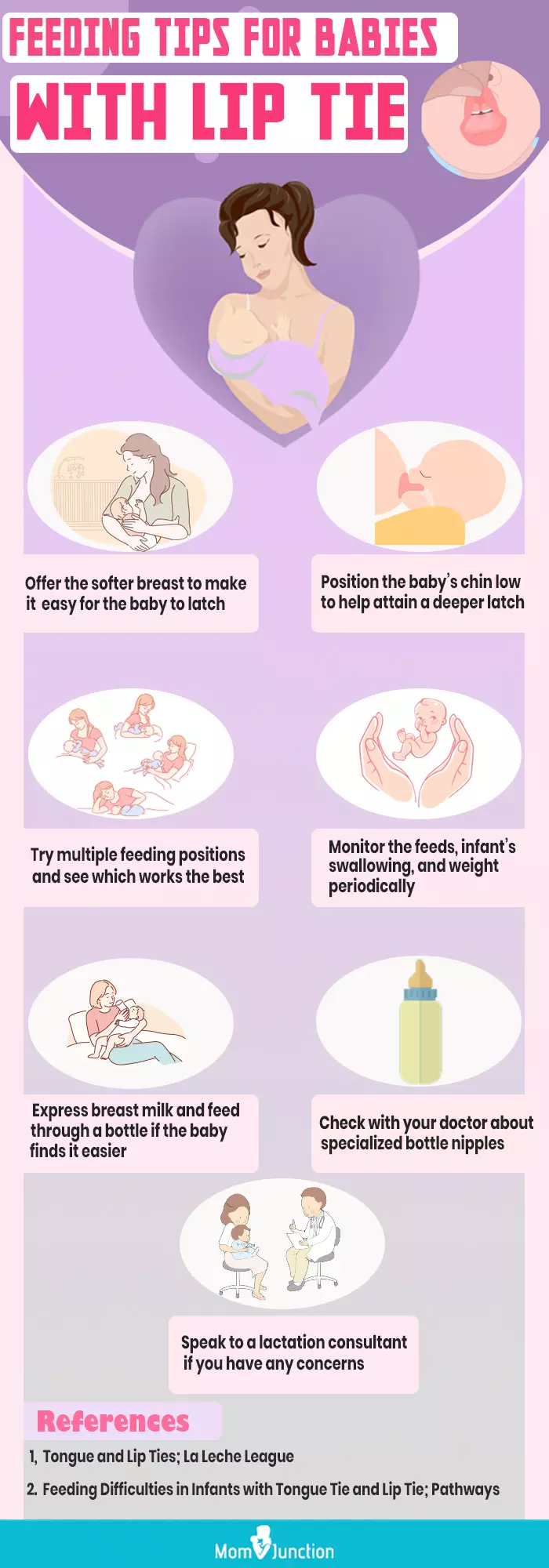
Learn how to recognize and treat tongue and lip ties in your child. Get the information you need to help your little one!
Personal Experience: Source
MomJunction articles include first-hand experiences to provide you with better insights through real-life narratives. Here are the sources of personal accounts referenced in this article.
i. Our journey with lip and tongue tie;https://nancikennedy.wordpress.com/2014/01/03/our-journey-with-lip-and-tongue-tie/
References
1. Kotlov LA, Diagnosing and understanding the maxillary lip-tie as it relates to breastfeeding; National Center for Biotechnology Information
2. MTHFR gene; U.S. National Library of Medicine
3. Feeding Difficulties in Infants with Tongue Tie and Lip Tie; Pathways
4. Jennifer Thomas and John E. McClay; Breastfeeding: what to do about ankyloglossia, lip-tie; American Academy of Pediatrics
5. Treatments for Ankyloglossia and Ankyloglossia With Concomitant Lip-Tie; National Center For Biotechnology Information (2015)
6. W. Heo and H.C. Ahn, Upper lip tie wrapping into the hard palate and anterior premaxilla causing alveolar hypoplasia; National Center for Biotechnology Information
7. Treatments for Ankyloglossia and Ankyloglossia With Concomitant Lip-Tie; National Center for Biotechnology Information
8. Devishree et al.; Frenectomy: A Review with the Reports of Surgical Techniques; National Center For Biotechnology Information (2012)
9. C.S. Maria et al., The Superior Labial Frenulum in Newborns: What Is Normal?; National Center for Biotechnology Information
10. Chloe Santa Maria et al., The Superior Labial Frenulum in Newborns: What Is Normal?; NCBI (2017)
11. Policy on Management of the Frenulum in Pediatric Patients; AAPD
12. Chloe Santa Maria, et al;The Superior Labial Frenulum in Newborns: What Is Normal?;;National Library of Medicine (2017)
13. Tongue-tie; The Royal Women’s Hospital
Community Experiences
Join the conversation and become a part of our nurturing community! Share your stories, experiences, and insights to connect with fellow parents.
Read full bio of Dr. Atiqur Rahman Khan
Read full bio of Rohit Garoo
Read full bio of Dr. Ritika Shah
Read full bio of Anindita Ghatak








